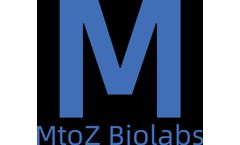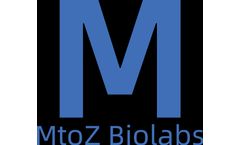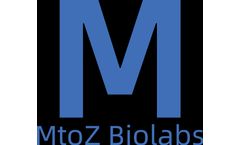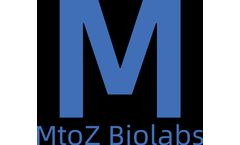Refine by
Molecular Biology Articles & Analysis: Older
65 articles found
In response to these challenges, Alfa Cytology’s therapeutic antibody development services are meticulously designed to cater to the unique molecular characteristics of bladder cancer. The service encompasses the entire preclinical development lifecycle of therapeutic antibodies—ranging from initial conceptualization and engineering to rigorous quality assurance assessments. ...
Applications of Degradome Sequencing Degradome sequencing has a wide range of applications in molecular biology and genetics: Identification of Novel miRNAs: This technique allows for the rapid and accurate identification of new miRNAs and their target genes through reverse sequencing of the degradome. ...
Reporter stable cell lines are invaluable tools in molecular biology and biochemistry. By integrating a reporter gene into the genome of a cell, researchers can create a stable cell line that emits a measurable signal in response to specific stimuli or conditions. ...
Their ability to modulate various biological processes makes them significant players in the field of molecular biology and medicine. Among the various tools utilized in research and therapeutic applications, miRNA mimics have emerged as powerful instruments for manipulating and studying gene expression. ...
Biochemical AnalysisUse specific chemical reagents (such as certain compounds that can specifically bind to glycation sites) to quantify the degree of collagen glycation.5. Molecular Biology TechniquesUsing PCR (Polymerase Chain Reaction) and gene cloning techniques can help study the regulatory mechanisms of collagen glycation.6. ...
These providers leverage state-of-the-art molecular biology techniques and bioinformatics tools to deliver clonality analysis services tailored to client needs. ...
Therapeutic monoclonal antibodies (mAbs) are a class of antibody drugs that are highly uniform and have pharmacological effects against a single epitope obtained through molecular biology. In the process of new drug development, the study of pharmacokinetics is of great significance. ...
Enhancing the stability, specificity, and activity of these enzymes under various conditions could expand their application in synthetic biology, molecular diagnostics, and gene editing technologies. Structural biology techniques, such as X-ray crystallography and cryo-electron microscopy, are providing unprecedented insights into RNase function ...
In-depth research on protein interaction plays a crucial role in life science research. Proteins are the main bearers of life activities, and their interactions form a complex molecular network within biological cells. Protein-Protein Interaction Sequencing (PPI-Seq) is an emerging technology. Based on high-throughput sequencing, it allows researchers to explore protein interactions at the whole ...
Gene knockout (Gene Knockout) is a molecular biology technique that allows researchers to block or shut off the function of a specific gene to study its role and importance. ...
Custom mRNA production has emerged as a cutting-edge technology in the field of molecular biology, offering researchers the ability to tailor-make specific messenger RNA molecules for various applications such as vaccine development, gene therapy, and regenerative medicine. ...
Protein-Protein Interaction databases primarily record experimentally validated protein interaction data. Here are some key Protein-Protein Interaction databases:BioGRID(Biological General Repository for Interaction Datasets)BioGRID is a database focused on biological molecular interactions, including protein-protein, protein-DNA, and other types of interaction data.DIP(Database of Interacting ...
Our service offers cutting-edge technology and expertise to help researchers construct stable cell lines with overexpressed genes, paving the way for groundbreaking discoveries in the field of molecular biology. One of the biggest hurdles researchers face when studying gene function is the need to manipulate gene expression levels to observe their effects on ...
Small molecule drugs are characterized by their low molecular weight and simple chemical structures. These properties confer several advantages, including the ability to easily pass through cell membranes and the predictability of manufacturing, storage, and dosing. ...
CRISPR technology has revolutionized the field of genetics and molecular biology by enabling precise editing of the genome. In recent years, CRISPR activation (CRISPRa) has emerged as a powerful tool for upregulating gene expression, offering researchers a new way to investigate gene function and potentially develop novel therapeutic strategies. ...
In order to more effectively deliver chemotherapy drugs, Small Molecule Drug Conjugates (SMDC), Antibody Drug Conjugates (ADC), and Degradation Antibody Conjugates (DAC) have been successively explored and developed, enhancing the therapeutic index while providing selective delivery. What are their similarities and differences? What are their respective advantages? What is the current status of ...
Evaluating the stress related effects of various restraint methods in rodents Any restraining device used in an inhalation exposure set-up will be, by definition, restricting the subject’s ability to move. For nose-only inhalation set-ups, typical restraints are rigid, fully enclosed and include a metal or acrylic plunger forcing the subject forward and preventing the subject from ...
These providers leverage state-of-the-art molecular biology techniques and bioinformatics tools to deliver clonality analysis services tailored to client needs. ...
It forms a gel-like substance when mixed with water, making it ideal for applications in molecular biology, including gel electrophoresis, DNA isolation, and protein separation. l Carrageenan The structure of carrageenan, the main cell wall polysaccharide found in red algae, varies depending on the type of algae. ...
Target identification of piperazine-like small molecule RX-5902 Kost et al. used DARTS technology and isotope labeling to demonstrate that the piperazine-like small molecule RX-5902 can inhibit the growth of cancer cells by binding to phosphorylated p68RNA helicase and down-regulating the expression of c-Myc, cyclin Dl and p-c-Jun genes in the β-chondin signaling pathway, thus revealing the ...













